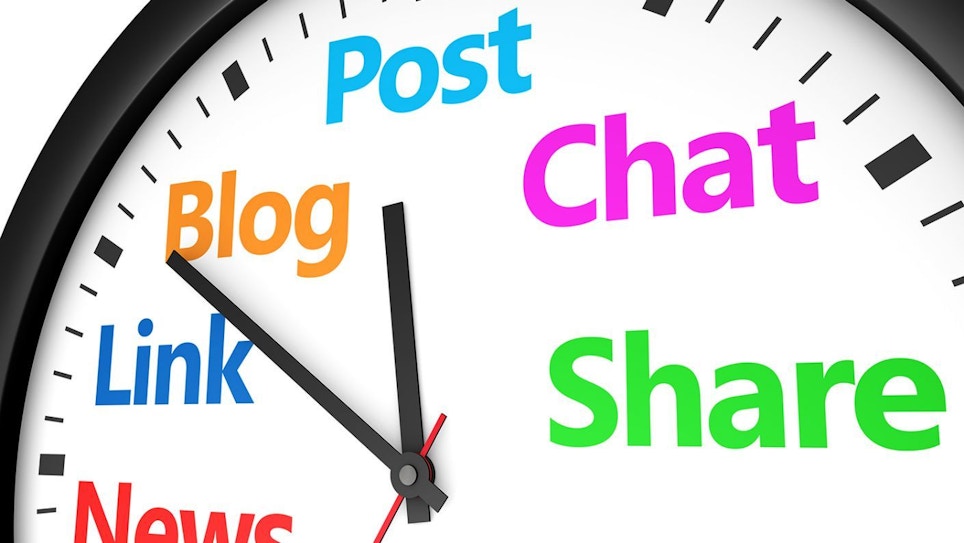In the world of social-first content marketing strategy, the need for content on other platforms is usually forgotten. This “social-first” strategy can also add to a business owner being overwhelmed, “I need to create content, but I don’t know where or how.” Switching to a strategy that revolves around telling a story about your business, though, rather than just creating standalone social posts with no overarching goal, can relieve a lot of that stress and make creating content much more natural, efficient and consistent — and because consistency leads to more sales, that’s what matters most.
The key to this storytelling content strategy is to find a storyline that relates to your marketing goals for a particular period of time (anywhere from a week-long campaign to a yearlong campaign). You can then create the content that tells that story in a way that can be shared on different platforms. These storylines can be inspired by and pulled from a variety of areas surrounding your business, including:
- Your business.
- Your employees.
- Your services.
- You!
Two Blog Posts = 12 Content Points
Do you have a product or service you would like to sell more of in a particular month? Brainstorm a storyline that relates to that product or service, focusing on how and why you decided to provide that service. Let’s say, for example, you offer scope-mounting and bore-sighting and you want to promote this service in the month before a particular game season opens. Why do you offer this service? You have tools to do the job that your customers likely do not, your customers are busy and this saves them time and frustration, your expert skills in scope-mounting protect their investments in expensive optics, and this service gets them onto the range and into the field knowing that their firearm is ready to go. Note that this kind of approach puts the service at the forefront of a potential customer’s mind, especially if it is reinforced across multiple platforms — people cannot buy something if they don’t know it exists!
The second and third steps are to create the actual content and then determine the delivery methods for that content. For a month-long content push to highlight that scope-mounting/bore-sighting service, the following is an example of a multiple-platform content strategy.
1. Article or blog post for the website with images and copy about why you created that service.
- Social post with link to the article.
- Short video on social that relates to the blog post, perhaps showing a bore-sighting tool your staff uses — preferably one a customer is not likely to have — and how this helps produce a properly mounted scope.
- Social post with a standalone photo — a gunsmith tightening ring screws with the correct screwdriver — and a caption that is a shortened version of the blog post.
- Second social post with a different standalone photo and a caption that is a shortened version of the blog post.
- E-newsletter with a link to the full article.
- Social post with link to the e-newsletter.
2. Article or blog post for the website with images and copy about how the service works.
For the bore-sighting service, this might include the steps your gunsmith or other staff take to mount the scope, bore-sight it and guarantee it’s on straight, as well as how long the process takes (remember, one of the benefits of this service is that you’re saving your customer time). It should also emphasize that this will reduce your customer’s time on the range and investment in ammo getting zeroed in, as well as how your service helps protect their optics from damage resulting from improper mounting.
- Social post with link to the article.
- Short video on social that relates to the blog post. This time around, maybe show screws damaged by the wrong screwdriver or an overhead shot of a scope out of line with the rifle because the ring screws weren’t tightened properly.
- Social post with a standalone photo — those damaged screws would be a good one — and a caption that is a shortened version of the blog post.
- Second social post with a different standalone photo and a caption that is a shortened version of the blog post, this time maybe one of your customers with a target showing a tight group and a caption that reads, “John was zeroed in at 100 yards with just five rounds after using our bore-sighting service.”
- E-newsletter with a link to the full article.
- Social post with link to the e newsletter.
Tweaking the Process
Depending on how often you send out e-newsletters, post to social in general and post new content to social, etc., the above can be changed to suit your needs. As you can see, though, you can create at least 12 pieces of content out of two articles, both focused on one topic, and you can spread these out over a week or month depending on your content strategy goals — and isn’t that far less stressful (and time consuming) than creating 12 individual one-topic pieces of content that would have only a fraction of the reach those two posts did because they multi-tasked, if you will, and emphasized the one thing you truly wanted to sell?
Here are a few more things you can do to refine this strategy and really make limited content creation work for you. Tweak them as you need to suit your goals and timeline:
- Develop storylines as they relate to your goals, e.g., you want to sell a particular lot of ammo, you want to get rid of aging inventory with a special sale, you want to fill a particular class or improve attendance at a weekly match, etc.
- Evaluate the types of posts and their timing that your audience responds best to.
- Create the content from the storylines that your audience will respond to best to, depending on the platform. This could be short videos, standalone photos, or simple text posts. Remember, every social account and its followers reacts differently to different content.
- Map out the timeline of when you are going to share this content (weekly, quarterly, yearly, etc.)
- Create a physical calendar of storyline posts, call-to-action posts that relate to your goals, personal posts that relate to your brand that are outside the story, and engaging items that relate to the interests of your various audiences. Remember that many, if not most posts, can be scheduled on the various platforms, so you can take 30 minutes to upload all your posts for a particular campaign and be done with it, and that’s far easier and far less stressful than trying to remember to take the time, especially the right time, to make real-time posts.
Using a content strategy of this type leads to consistent social media posting and content creation. Consistency leads to increased interaction on all platforms, and that in turn leads to increased brand awareness and sales. Even more important, following a plan like this minimizes the stress and time needed to constantly create original content, and that allows you to do what you do best — provide the best service you can to the customers in front of you.
About the Author
Hannah Stonehouse Hudson (below) is a keynote speaker, coach and social media communications strategist. As the owner of HSH Communications, she helps people and organizations reach the most people on social media, and she is the instructor of the popular online course “How to Get the MOST Eyes on Your Social Media Content.”









